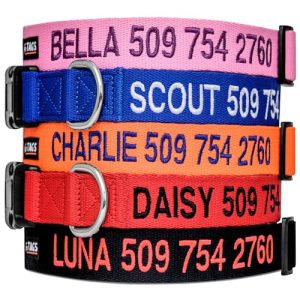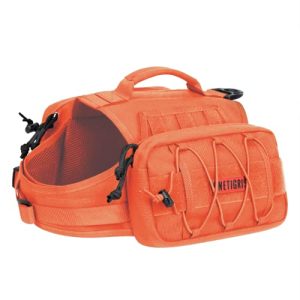Looking for the perfect spot to take your dog swimming? Whether your furry friend loves splashing in the water or you want to cool off together on a hot day, finding the right place is key.
You want somewhere safe, fun, and welcoming for both you and your pup. You’ll discover the best dog-friendly swimming spots near you, tips to keep your dog happy and healthy in the water, and what to watch out for to make every swim a great experience.
Keep reading, and soon you and your dog will be making a splash at the perfect location!
Best Dog-friendly Beaches
Finding the best dog-friendly beaches can turn a simple day by the water into an unforgettable adventure for both you and your furry friend. These beaches welcome dogs with open paws, providing safe spaces to swim, run, and play. Knowing where to go, what to expect, and how to prepare will help you make the most of your visit.
Popular Coastal Spots
Some beaches have earned a reputation for being especially welcoming to dogs. Spots like Cannon Beach in Oregon, Huntington Dog Beach in California, and Montrose Dog Beach in Chicago attract dog owners from far and wide.
Each offers unique landscapes and water conditions. Have you tried visiting a beach where your dog can splash freely without crowds? It changes the whole experience.
- Cannon Beach, Oregon:Wide sandy shores and off-leash areas.
- Huntington Dog Beach, California:Dedicated dog zone with plenty of space.
- Montrose Dog Beach, Chicago:One of the first dog beaches in the U.S., perfect for lake swims.
Rules And Regulations
Every dog-friendly beach has its own set of rules. These often include leash requirements, hours when dogs are allowed, and clean-up policies. Ignoring these can lead to fines or being asked to leave.
Before you pack your dog’s favorite toys, check the local guidelines online or at the beach entrance. Are you prepared to follow these rules to keep the beach enjoyable for everyone?
- Leash rules vary: some beaches allow off-leash play during specific hours.
- Always clean up after your dog to maintain the area’s cleanliness.
- Watch out for seasonal restrictions, especially during nesting seasons for local wildlife.
Facilities For Dogs
Good dog-friendly beaches often come with amenities designed to keep your pet comfortable. These include fresh water stations, shaded rest areas, and waste disposal bins.
Some beaches even have dog wash stations to rinse off salt and sand after swimming. Have you found a beach that thought about your dog’s needs this well?
- Fresh water taps to keep your dog hydrated.
- Shaded spots to rest and cool down.
- Waste bags and disposal bins to keep the beach clean.
- Dog wash stations for a quick rinse after playtime.

Credit: www.sugarthegoldenretriever.com
Lakes And Ponds For Dogs
Lakes and ponds offer a perfect natural playground for dogs who love to swim and explore. These calm bodies of water provide a refreshing break for your furry friend, especially on hot days. But choosing the right spot and staying safe are key to making the experience enjoyable for both of you.
Quiet Freshwater Areas
Look for lakes and ponds that are less crowded and have gentle shorelines. Quiet areas reduce stress for your dog and limit encounters with boats or loud noises. Pay attention to water clarity and avoid places with visible algae or debris that can be harmful.
Some parks have designated dog-friendly ponds where your pet can swim off-leash. Local nature reserves often maintain clean, safe freshwater spots perfect for splashing around. Have you noticed how your dog’s energy changes after a good swim in these peaceful waters?
Safety Tips Near Lakes
- Always check for strong currents or sudden drop-offs before letting your dog enter the water.
- Bring fresh water and rinse your dog after swimming to remove any bacteria or chemicals.
- Keep an eye on your dog at all times—no matter how good a swimmer they are.
- Use a dog life vest if the water is deep or if your dog is new to swimming.
- Watch for signs of fatigue or distress, and give your dog regular breaks.
Have you ever seen a dog struggle in water that looked safe? These precautions can save you from a stressful situation.
Local Dog Swim Events
Many communities host dog swim days at local lakes or ponds, especially during the warmer months. These events offer a great chance to meet other dog owners and learn about new swimming spots. Plus, they often include safety demonstrations and fun activities.
Check your city’s parks and recreation website or local dog groups on social media for announcements. Attending one could help you discover hidden gems and get tips from experienced dog swimmers. Would your dog enjoy a day out with new friends in the water?
Dog Parks With Water Features
Dog parks with water features offer a fun and refreshing way for dogs to enjoy exercise and play. These parks are designed to keep dogs cool and active, especially during warm weather. Water features in dog parks make the experience more enjoyable and safer for pets and their owners.
Splash Pads And Pools
Splash pads provide gentle sprays of water for dogs to run through and splash around. They are shallow, making them safe for dogs of all sizes. Small pools in some parks allow dogs to swim or wade at their own pace. These features help dogs stay cool and active without deep water risks.
Indoor Dog Swimming Centers
Indoor centers offer controlled environments for dogs to swim all year round. These facilities have heated pools and trained staff to assist dogs and owners. Indoor swimming is excellent for dogs needing low-impact exercise or rehabilitation. It is a great option during cold or rainy weather.
Benefits Of Controlled Water Play
- Reduces stress and anxiety in dogs.
- Improves muscle strength and joint health.
- Encourages socialization with other dogs.
- Keeps dogs cool and hydrated during play.
- Provides safe, supervised water access.

Credit: www.youtube.com
Rivers And Streams Suitable For Dogs
Rivers and streams offer refreshing spots for dogs to swim and cool off. These natural waters provide exercise and fun in nature’s own playground. Choosing the right river or stream is important for your dog’s safety and enjoyment.
Calm Current Locations
Pick rivers or streams with slow-moving water. Calm currents reduce the risk of your dog being swept away. Look for shallow areas where your dog can stand and rest easily. Wide riverbanks with gentle slopes are perfect for easy access. Avoid places with rapids or strong waves that can tire your dog quickly.
Seasonal Considerations
Water levels and temperature change with the seasons. Spring rains can make currents stronger and water colder. Summer usually brings warmer water but lower levels, exposing rocks and debris. Fall may have cooler water and falling leaves that can hide hazards. Winter often freezes parts of rivers, making swimming unsafe. Check local weather and water conditions before visiting.
Wildlife Awareness
Rivers and streams are home to many animals. Be aware of snakes, turtles, and insects that can harm your dog. Some fish and plants may cause allergies or poisonings. Keep your dog close to avoid encounters with wildlife. Watch for signs of nests or dens nearby. Respect the environment to keep it safe for your pet and local animals.
Preparing Your Dog For Swimming
Preparing your dog for swimming is key to making the experience safe and enjoyable. Not every dog takes to water naturally, so easing them in with care helps build confidence. Taking a few simple steps before your first swim can prevent stress and accidents.
Introducing Water Gradually
Start by letting your dog explore shallow water, like a gentle stream or the edge of a pool. Allow them to sniff and get comfortable without forcing them in. Patience is crucial—some dogs may need several visits to get used to the sensation of water.
Try playing with your dog near the water using toys or treats to create positive associations. Have you noticed how your dog reacts to wet grass or puddles? That reaction can guide how quickly you move forward.
Essential Safety Gear
A well-fitting dog life jacket is a must, especially for breeds not built for swimming or dogs new to water. Look for jackets with handles so you can easily lift your dog if needed. Bright colors improve visibility in lakes or the ocean.
- Choose a life jacket rated for your dog’s weight and size.
- Check straps and buckles before each swim.
- Bring fresh water and a bowl to keep your dog hydrated.
Remember, safety gear is not just for emergencies—it boosts your dog’s confidence, too.
Health Precautions
Check your dog’s health before heading out. Dogs with ear infections, skin conditions, or open wounds should avoid swimming to prevent worsening their condition. Also, rinse your dog with fresh water after swimming to remove chlorine or salt.
Watch for signs of fatigue or distress during swimming. How long can your dog swim before needing a break? Keep sessions short initially and increase duration based on their stamina.
Regularly clean your dog’s ears to prevent infections caused by trapped water. Consulting your vet about swimming is a smart step if your dog has any underlying health issues.

Credit: www.reddit.com
Post-swim Care Tips
After a fun swim, your dog needs some care to stay healthy and happy. Post-swim care helps prevent skin problems and keeps your dog comfortable. Follow these simple tips to care for your dog after swimming.
Drying And Grooming
Use a clean towel to dry your dog well. Pay attention to ears, paws, and under the tail. These areas stay wet longer and can cause infections. Brush your dog's fur to remove dirt and loose hair. Grooming helps keep the coat smooth and shiny.
Checking For Irritations
Look closely at your dog’s skin for redness or bumps. Check between toes and inside ears for signs of irritation. Swimming in natural water can cause allergies or insect bites. Call your vet if you see swelling or your dog scratches a lot.
Hydration And Rest
Give your dog fresh water to drink after swimming. Swimming uses energy and can make dogs thirsty. Let your dog rest in a quiet place to recover. Rest helps muscles relax and prevents tiredness.
Frequently Asked Questions
Where Can Dogs Swim Safely?
Dogs can swim safely at dog-friendly beaches, lakes, and pools. Always ensure there’s no strong current or harmful debris. Look for designated dog swimming areas where safety measures are in place. Bring fresh water to rinse off salt or chlorine afterward to protect your dog’s skin and coat.
Are Public Swimming Pools Dog-friendly?
Most public swimming pools are not dog-friendly due to hygiene concerns. However, some offer special dog swim days. Check local pool schedules for pet-friendly events. Always confirm with the facility before planning a visit to ensure a fun and safe experience for your dog.
Can Dogs Swim In Lakes?
Yes, many dogs love swimming in lakes. Ensure the lake is free from harmful algae. Check for any local advisories about water quality before letting your dog swim. Always supervise your dog to ensure their safety and bring fresh water for hydration.
What Are Dog-friendly Beaches?
Dog-friendly beaches are areas where dogs can swim and play freely. These beaches often have designated areas and rules to ensure safety. Always check local regulations for leash requirements and permitted hours. Clean up after your pet to maintain the beach’s dog-friendly status.
Conclusion
Finding a safe and fun place for your dog to swim matters a lot. Many parks, beaches, and lakes welcome dogs to splash and play. Always check local rules before heading out. Bring fresh water and watch your dog closely while swimming.
Clean up after your pet to keep places nice for everyone. Swimming helps dogs stay happy and healthy. Enjoy the time together and make great memories by the water. Your dog will love the chance to swim and cool off.

Emily Barker is the founder of ChillDogLife.com, a space dedicated to helping pup parents discover the best dog products, lifestyle tips, and cozy ideas for happier homes.
A lifelong dog lover, Emily combines her passion for pets with a knack for research to share trusted recommendations on everything from toys and furniture to health and everyday care.
Her goal is simple: to make life easier, stylish, and more joyful for dogs and the people who love them.







